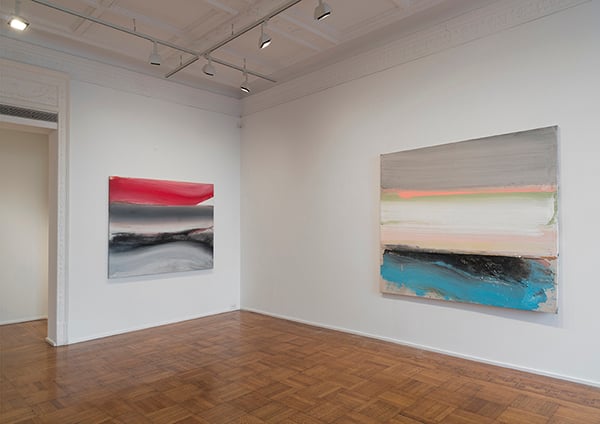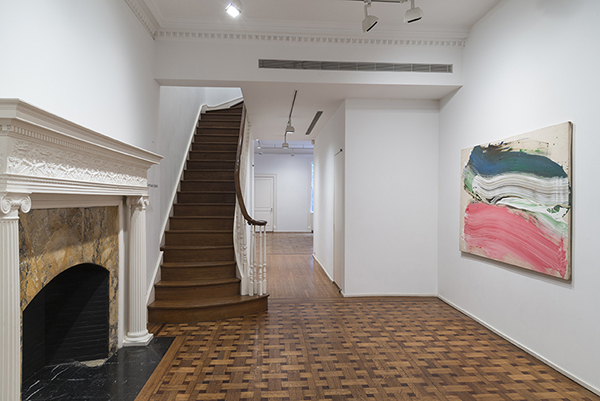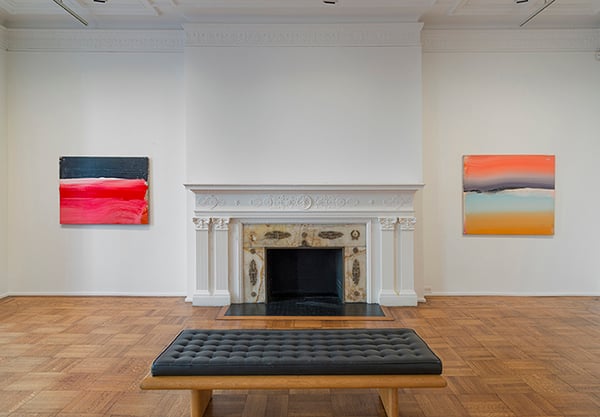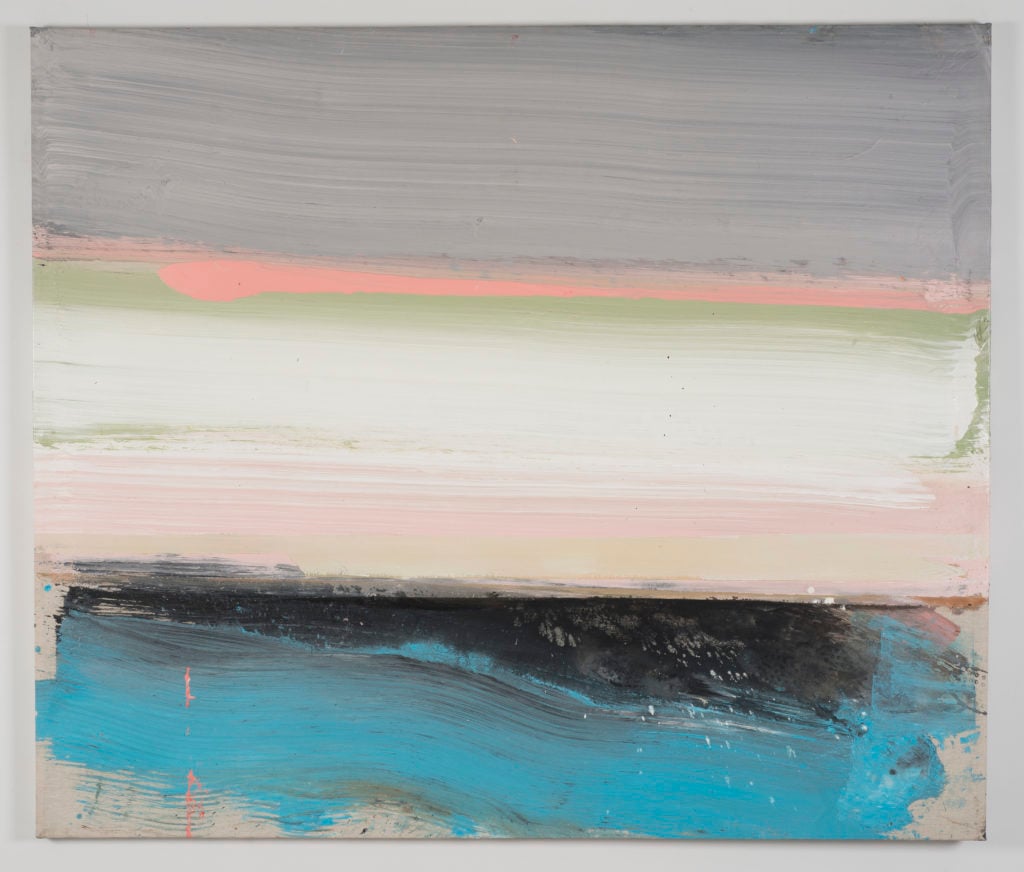Reviews
Witnessing Ed Clark’s Balancing Act at Tilton Gallery
The wordless meaning of the show only slowly reveals itself.

The wordless meaning of the show only slowly reveals itself.

Ben Davis

If you are looking for some solace in stressful times, you could do worse than the Ed Clark show currently at New York’s Tilton Gallery. That sentence could be a critical cliché about abstract painting in general, but in Clark’s case, pondering what exactly it is about his paintings that makes them especially programmed to serve this function is a pleasurable activity all its own.
This is the 90-year-old artist’s second show at the gallery, a small exhibition of 13 paintings—the first from the ’60s, the most recent from 2012—from this well-liked but still under-recognized second-generation Abstract Expressionist, whose canvases exude self-assured joy. Clark’s first show at Tilton was curated by David Hammons, doing his bit for his friend, an African-American artist who has not really been given his due.
“I couldn’t get into a commercial gallery where a white person was running it,” Clark recalled in Bomb’s oral history from a few years ago.

Installation view of Ed Clark at Tilton. Image courtesy Tilton.
On the other hand, Clark rejected being associated with “Black Art,” claiming, somewhat ruefully, to have once sabotaged himself by yanking a canvas from New York’s Museum of Modern Art when he found out it was going to be placed in a show of all African-American artists. His abstraction is caught up with a very specific, delicate drama.
That Bomb interview prints out at more than 100 pages, but believe me, it’s worth it. It’s full of stories from Clark’s early days serving in the segregated military in WWII, his starving artist period soaking up the scene in post-war Paris, and his stint working as gallery assistant at the legendary Sidney Janis gallery in New York, epicenter of the New York School.
What Clark does not explain in all those pages, however, is how he thinks about making a painting. One of the amusements of the text, in fact, is observing the exasperated interviewer, painter Jack Whitten, repeatedly trying to get Clark to explain what he does, always failing as Clark deflects talk to this or that bawdy anecdote.

Installation view of Ed Clark at Tilton. Image courtesy Tilton.
Clark does talk briefly about his “Mediterranean use of colors.” And he suggests that his signature technique, using a push broom to move paint, is a way to “crush through things,” that is, to give a sense of driving energy and keep it all from being too self-conscious.
“When I get myself into painting now, it’s hard to put in the words,” Clark says. He speaks approvingly of children’s unfiltered reactions to the work as opposed to adults who treat abstract painting “like a puzzle they want to put together.” The impression you get is not just that he doesn’t like to explain himself; it’s that art would seem to represent a space where he is liberated from having to.

Ed Clark, Untitled (2010). Image courtesy Tilton.
What, then, to say about the Tilton show? Just that his deft compositions may not be “puzzles” to solve, but that they are not child’s play, either. When I sit down to spend time in front of a late work like Untitled (2010) and try to figure out why I find it in particular charming, what slowly becomes clear is how much wordless intelligence is in there.
The three horizontally stacked zones of the painting are roughly in balance, and preserve the horizontal energy. But the more severe black-and-blue, bruised colors of the bottom section diffuse into a splattery chaos that sets off the mild gray-and-pink tranquility of the top section.
Tapered dashes of pink and black in the painting mirror each other, serving to demarcate the borders of the top and bottom thirds of the painting. But they do so in a way that is deliberately not symmetrical: the black is broader but also less focused than the pink.
The key drama of Untitled is the lateral sweep of the paint, as if you are looking at the moving expanse of rivers of color. But the paint also seems to hit a bump at the left and right edges in the top section, as if that river was veering over a rapid; in the bottom third, the colors trail off into a fringe of bare canvas, also accentuating the border, but in a different way. So the painting suggests both expansive energy and its containment—dynamism bottled on the wall.
Overall, Untitled has Clark’s strenuously carefree look, but underneath its surface are all these deliberate, tremulous little balancing acts: It gives you an atmosphere of visceral experience but also a comforting, underlying plan. At the same time, Untitled projects an overall structural idea from the very first glance (those three bands, stacked like stripes in a flag), even as all the elements are a little out of sync, so that it doesn’t get too burdened with its structure, either: it connotes order but also freedom.
There’s balanced tension throughout. And the fact that Clark’s painting feels both fresh and comforting, a refuge from both uncertainty and routine, is not just incidental to his history or our own, but part of its design.
“Ed Clark: Paintings” is on view at Tilton, 8 East 76th Street, through February 18, 2017.